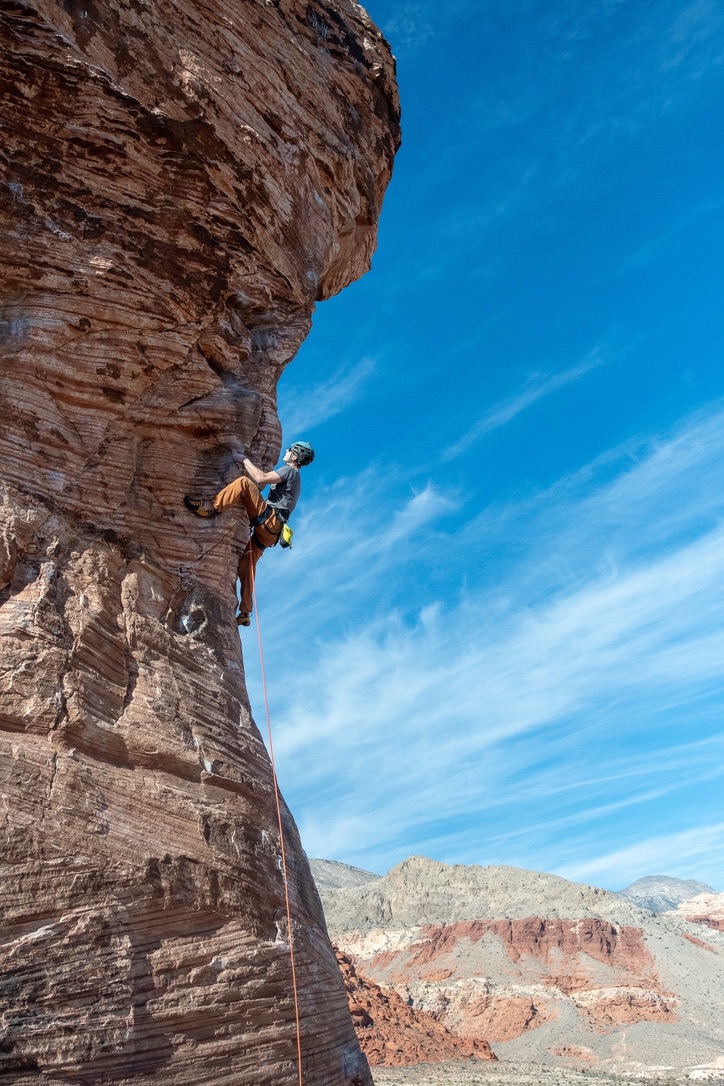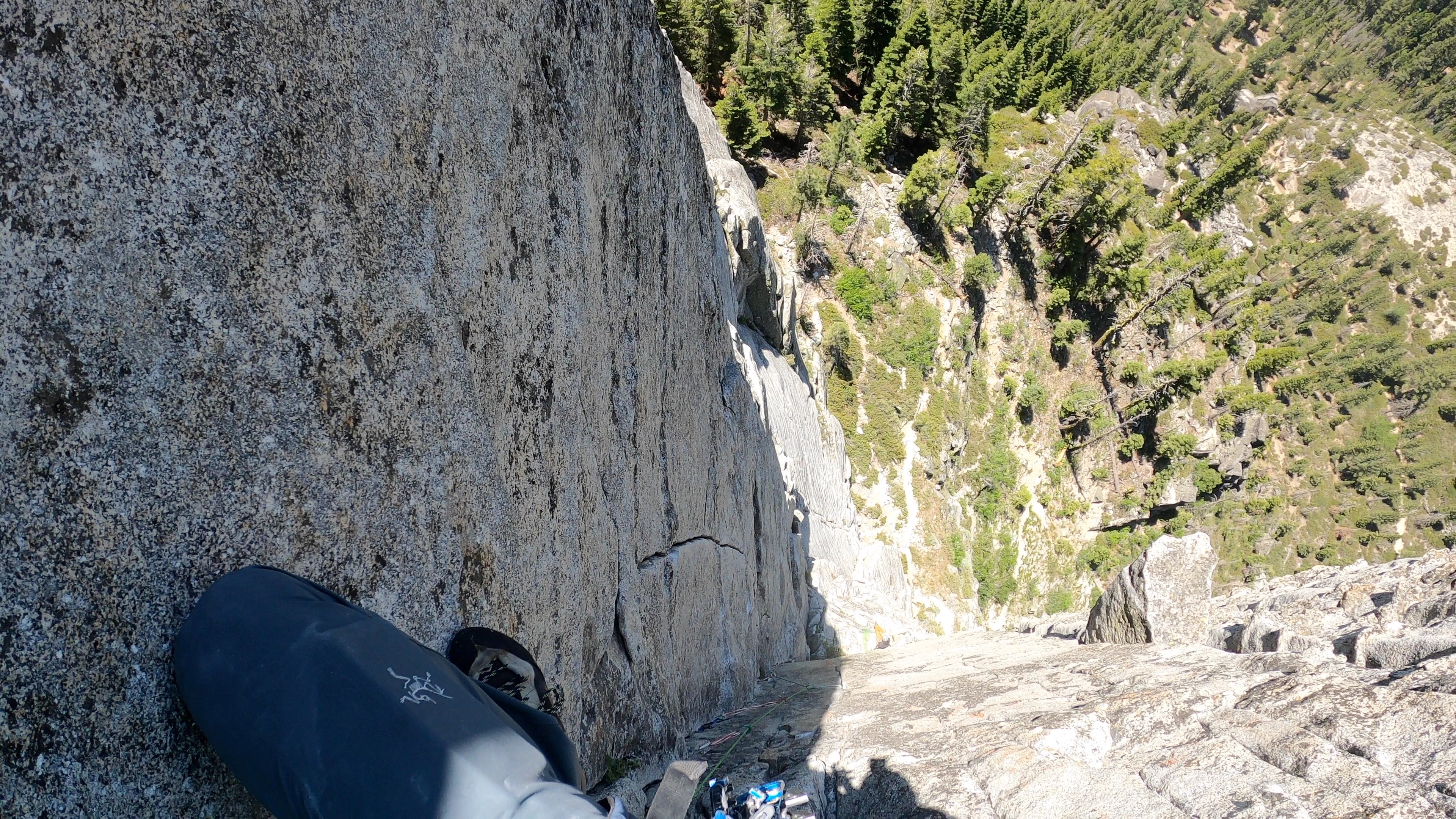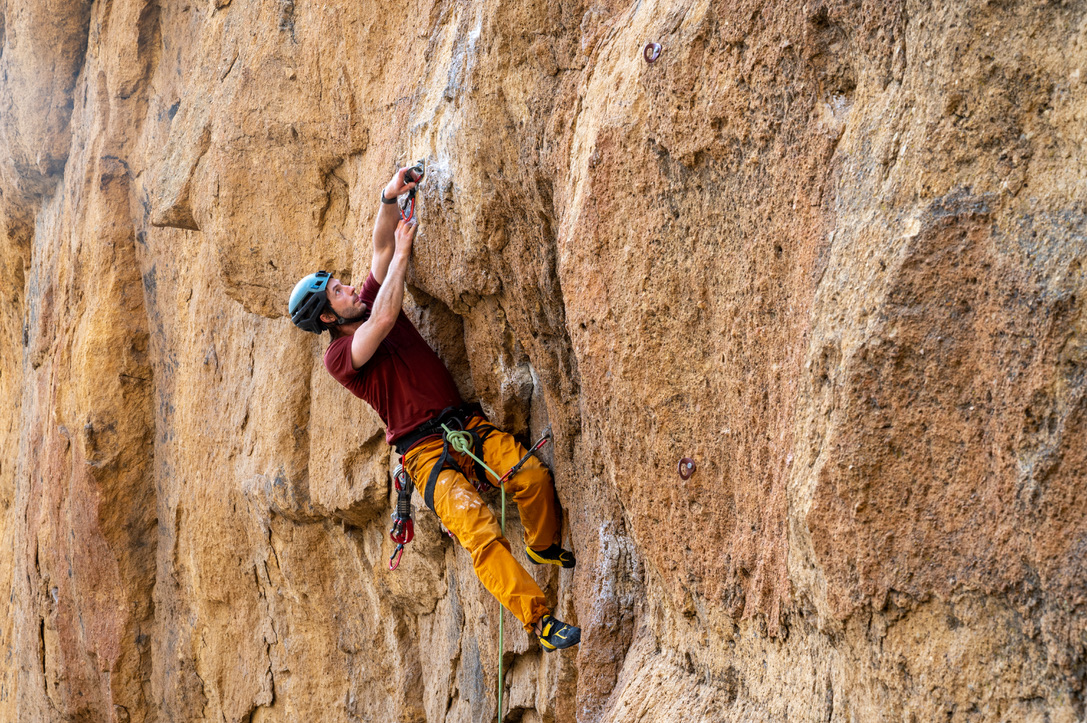Making Trad rad
I had racked a double set of cams, way too many nuts, and strangely enough a good selection of hexes. I had read about hexes online and they made sense (they really don’t if you have cams). At least it made spotting my gumbyness easy if the awkward climbing didn’t give that away (it probably did). I was on my first trad lead three years ago on “After 6”, a popular 5.7 multi pitch in Yosemite. I was scared out of my mind, way too gripped, struggled to place pro, and dropped a carabiner while awkwardly setting the first anchor. We were so slow that we bailed before the last 5.6 pitch. Gumby. I had only been outdoor climbing a handful of times and hardly ever led any routes in the gym. I did follow a five day multi pitch course (not trad), but just didn’t have experience leading. The reason I started trad climbing is that I moved to California (from Europe) and, after just starting outdoor climbing there, wanted to continue the outdoor endeavor after the move. California has a lot of trad climbing, so it felt like a necessary thing to get into. I also didn’t know anyone yet, so forget about mentoring. It made sense at the time. Before this first lead, I did spend a day with a guide teaching me anchor building and gear placement, and read several books about trad climbing, anchor building and self rescue. These are all great ideas, but not nearly enough to prepare for the real thing. After this first experience I struggled my way up more 5.7 and 5.8 climbs, mostly around Tahoe, never really enjoying the experience being just way too scared (for good reason). Three years and about 200 pitches later I finally feel confident getting on any 5.9 or 5.10 when pushing myself. I took two only two falls, both recently, and never shouted “take”. I fell once on a 5.10b and once on a 5.9 offwidth. In both cases I knew it would probably happen and made sure the pro was good. Although I got to a point where I’m now really enjoying climbing trad and get a lot done in a day, I think the process could have been a lot better. Here are some things that I think could help getting to the point of being safe and having fun much sooner.
Become a confident sport climber first
Trad and sport climbing are quite different. But also the same in some aspects. Even indoor sport climbing can really help build confidence in leading. Leading is scary - and if you haven’t yet got your head game ready in the gym, being on a trad is going to be way more scary. Sport climbing also teaches you to clip from good positions, instead of clipping whenever you can almost touch the bolt. This is even more important when fiddling with gear obviously. To stop making excuses not to lead in the gym, I even stopped top-roping completely (aside from some specific training exercises) for months, just to make leading the “normal” thing to do. This really helped with getting better and more confident at lead, which has translated to better outdoor climbing. Outdoor sport climbing obviously also helps with getting better at moving on rock, although trad climbs are typically a bit different in style.

Get strong
Good climbing technique is key, but being (a lot) stronger than you need to be on a climb gives some margin when things get confusing. And things will get confusing when you just start out! You’ll see plenty of older, slightly out of shape, trad climbers out there crushing it. But they probably have been at it for a while, and can be a lot more efficient with movement and gear placement. If you’re only climbing 5.9 sport, you probably shouldn’t get on 5.7 trad. I’m climbing 5.12c indoors, 5.11d sport outdoors, but only lower 5.10 trad.
Get a guide or a mentor
Don’t try to just figure it out. Ideally you can follow a confident leader for some days to get an idea how the climbing feels, how to recognize belay ledges and gear placements. If you can’t find anyone, hire a guide to climb with. When ready to do your first leads, have someone with experience follow you to give feedback on placements and anchors. If you’re in Northern California I highly recommend Lover’s Leap Guides.
Read and practice on the ground
Anchor building can be tricky and time consuming when you’re new to it. But a lot of it can be practiced on the ground. Just hang some draws somewhere and build anchors over and over again until it’s super smooth. Also read everything you can on building anchors and self rescue, and practice everything you read.

Practice crack climbing
Even when many trad climbs aren’t pure crack climbs, the fact that they are trad routes means there will be some cracks at least. Knowing how to use them is often critical to not make the climbing much harder than the grade. Practice jamming on artificial cracks in the climbing hall. It’s frustrating and painful to start, but once you have the technique down a hand jam or finger lock will just feel glorious.

When you don’t trust it, don’t place it
It’s very tempting to place pro whenever you think there is a possible placement. But if a placement isn’t great, find a better spot. Especially on easier climbs there are often multiple options, but sometimes you have to make another move or two. I’m not saying “run it out”. Place a lot of pro, but only good pro. Wonky pro gives a false sense of safety but won’t do much if you would actually take a fall. Take the time to find that good placement. Before crux moves, it’s fine to place multiple pieces as well.
Some routes just don’t have great placements. This is often mentioned in the guidebook or on Mountain Project. Just stay away from those routes until you’re more experienced.

Bounce test on a top rope
Another way to get familiar and confident in gear placement is setting up a top rope on a single pitch crack. Place gear and put your body weight on it by stepping in a sling. Or even more fun, get some aid ladders and aid climb the whole pitch. Bounce testing doesn’t nearly put the same forces on a piece as a fall, but it’s still a useful way to practice placements.
Bring a lot of gear, but only the right gear
When just starting out, your gear placements will likely not all be ideal. And the climbing won’t be as smooth as it should. For this reason it’s good to place more pro than you ideally would. Don’t bring extra big cams “just in case”, but instead bring extra finger size cams. There are often more smaller placements to be found and smaller cams are obviously a lot lighter, so the penalty of taking extras isn’t as severe. Save some weight by not taking stuff you don’t need “just in case”. Is there any scenario where you’re going to use those ten steel lockers? Also, bring some light approach shoes instead of heavy hiking shoes. Take a photo of the guidebook instead of hauling up the book itself.

Buy the guidebook
Mountain Project is a great resource to find information about routes. This should be used as an additional resource however. Rely on the local guide book primarily. It typically contains a topo, which is crucial to help with route finding. The descriptions are often also more reliable, because Mountain Project pages are sometimes just too minimalistic or provide information that’s just wrong.


